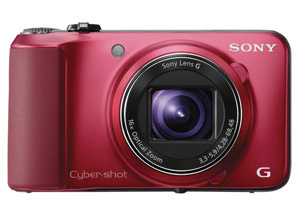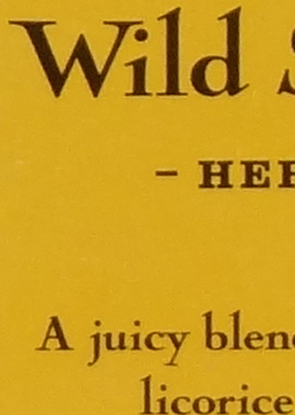Best Compact Superzoom Cameras
ALSO RAN:
Sony Cyber-shot DSC-HX10V
Sony Cyber-shot DSC-HX10V
The new Sony DSC-HX10V looked at first like a replacement of last year's HX9V, but it is in some respects a downgraded version selling for less money. The HX10V did well in our autofocus and speed tests, ranking among the best of the compact superzooms in this regard. It generates fine photos if you are not blowing them up to large print size. But the downgrade to 1080i/60 as a maximum video format produces a lot of deinterlacing artifacts that you don't see in the more robust 1080p/60 video taken on the HX9V. Though the HX10V is 18 MP compared to the HX9V's 16 MP, there tends to be more noise in many of the images coming from the HX10V.
Sony evidently thought there would be a marketing benefit to adding super high ISO settings of 6400 and 12800 to the HX10V, because they did. That might be a good thing if the resulting photos taken at these settings did not look horrible. But they do. It is hard to get excited about a new feature that you would want to avoid at all costs.
In the end the Sony HX10V can take some fine pictures, but it has some flaws that knock it down the list.
 |
What's HOT about the Sony DSC-HX10V:
1. Good image sharpness and color accuracy at low ISOs
3. High resolution panorama mode
4. Very wide 24mm wide angle, matches ZS20 as widest in the group
5. 3D photos
6. 10 fps burst mode
7. HDR (or equivalent)
8. GPS
What's NOT so hot about the Sony DSC-HX10V:
1. Tends to produce more noise than the HX9V
2. 384mm telephoto, shortest in group
3. 1080i video--a downgrade from 1080p on the HX9V.
4. Average LCD screen illumination
5. No low res, high frame rate movie mode
6. Pic quality drops rapidly at ISO 800 and up
7. Excessive artificial edge enhancement in auto modes
8. Flash pops up under left finger
A Look at the Sony DSC-HX10V
Despite the fact that the HX10V comes in fourth in this shootout, it is capable of beating the Panasonic ZS20 in picture quality in some situations. In general, the ZS20 will render a sharper picture than the HX10V when the zoom lenses are at wide angle, and it will deliver more detail on the extreme telephoto end due to its longer 480mm reach compared to the HX10V's 384mm. But when the lenses are in mid-range, the ZS20 looses its sharpness advantage. In these situations, particularly in bright light when shooting at low ISO's, the Sony HX10V will produce a notably superior image to that coming from the ZS20, as illustrated here:


Sony HX10V Panasonic ZS20
(both cameras set at 7x zoom, displaying 100% detail)
One of the alleged features of the HX10V over last year's HX9V is the addition of 6400 and 12800 to the ISO options, which on the HX9V topped out at 3200. Why would you want to shoot at 12800 ISO you wonder? We don't know. Especially if it looks as bad as it does on the HX10V. If you want to see some of the worst noise, artifacts, and blur possible, look at the difference between the Sony HX10V shooting at 100 ISO, and the same camera shooting at 12800 ISO:
So the super high ISOs on the Sony HX10V are a new feature to be sure. Just a feature you'd hope never to use.
With regard to high ISOs, this is not a strong suit in Sony's compact superzoom cameras. Both the HX9V and HX10V suffer larger than average deteriorations in picture quality at high ISOs. Noise goes crazy and color accuracy suffers at ISO 800 and up.
The Verdict
The Sony HX10V can deliver very good picture quality at lower ISOs, not so good picture quality at higher ISOs. The full HD 1080/60p video that was available on the earlier HX9V has been downgraded to 1080/60i, which means you get a lot of deinterlacing artifacts on the HX10V that were never there on the HX9V. For movies you are usually going to get better results from a camera that will shoot progressive formats like 1080/24p, 1080/30p, and of course 1080/60p, than you will from any interlaced format which is what the HX10V is limited to.
The HX10V shoots still images rather rapidly, about one ever 1.2 seconds which is faster than the average of the group, but not quite as fast as the Panasonic ZS20 at 0.9 seconds. Its shot-to-shot reliability in terms of autofocus and color balance comes very close to the ZS20, and exceeds the performance of the others in this group. So in many respects it is not a bad camera, and could be a good deal at the right price as long as you aren't into movies and the scenes you shoot require use of the lower range of ISO settings.










